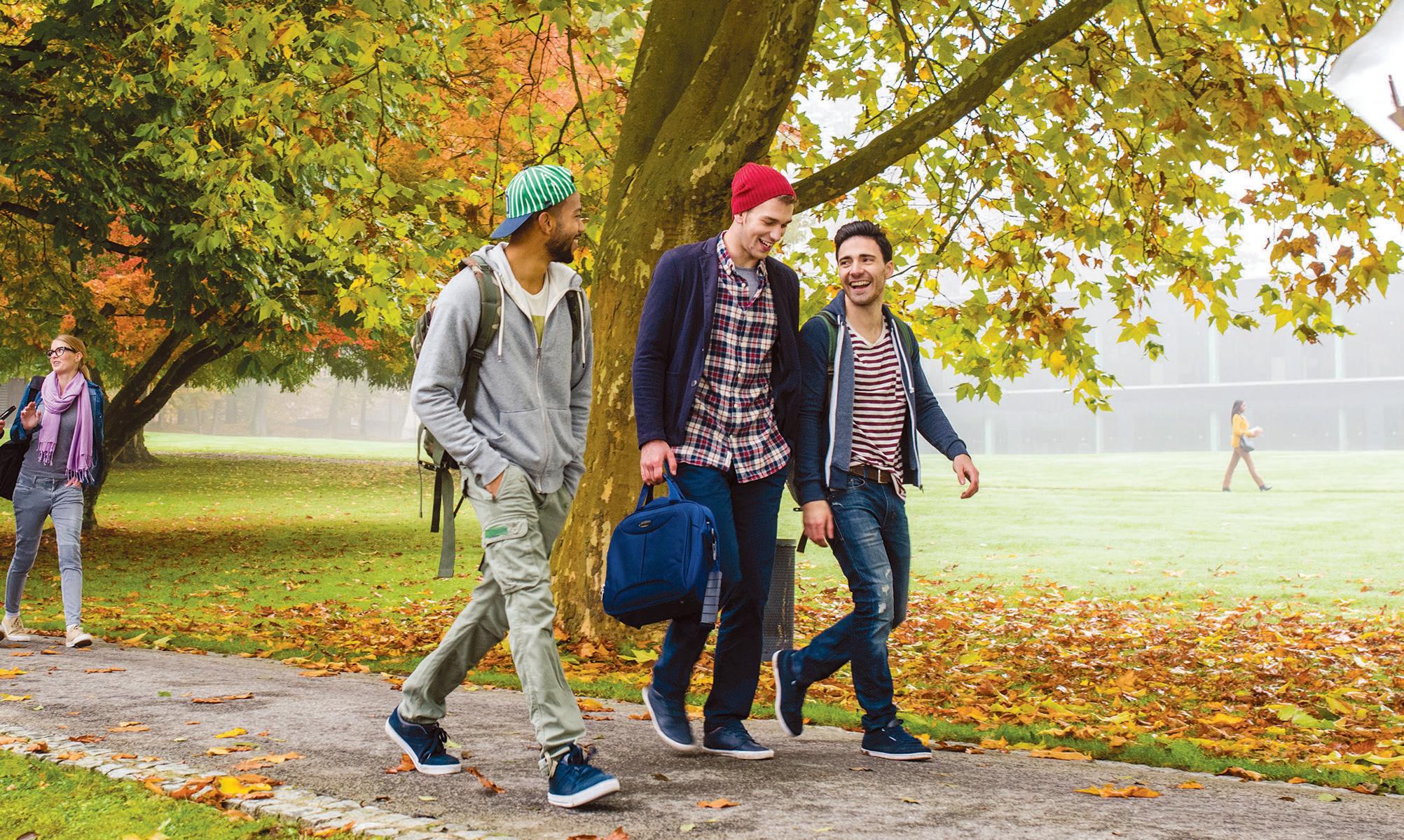
7 minute read
BACK TO SCHOOL
BACK TO SCHOOL SCHOOL


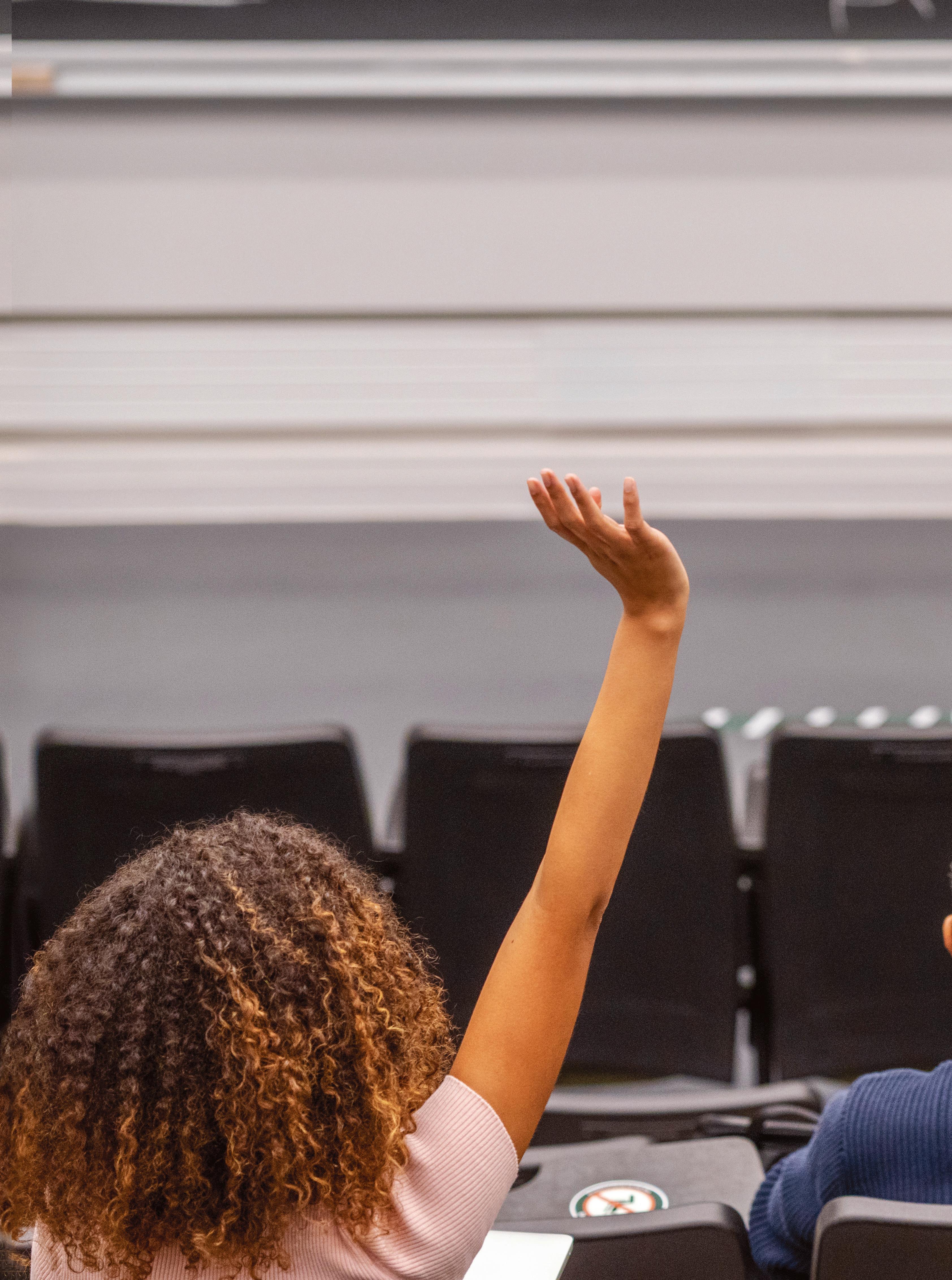
WHAT DID COLLEGES LEARN FROM THE RETURN TO CAMPUS THIS FALL? THREE INSTITUTIONS SHARE HOW CHANGES BROUGHT ON BY THE PANDEMIC ALTERED COURSE OFFERINGS AND THE STUDENT EXPERIENCE. BY KRISTEN HAMPSHIRE
oing back to campus this fall in many ways
Gfelt like a return to normal life for students who desired in-person coursework and hallmarks of the campus experience like attending college sporting events and hanging out with friends face to face.
“You can see it in the smiles and the fist bumps,” says Scott Markland, senior vice president of student development at Sinclair Community College in Dayton. “You can see a reinvigoration of campus spirit.”
Students reconnected with friends, returned to college activities and were reminded of the valuable role that in-person relationships play in their lives.
“Students have told us how much they appreciate the campus atmosphere and, when we were mostly remote, how much they missed interacting with peers,” Markland says. “Campus is a special place where you have these enriching, meaningful relationships and very interactional experiences — that’s what a college campus is all about.”
Of course, the concept of campus life was upended at the onset of the pandemic in March 2020 and throughout the first half of 2021. But after a summer of readily available vaccinations and with health and safety protocols in place, Ohio colleges and universities welcomed students back to campus with caution.
At Cleveland State University — aside from students wearing masks indoors — classrooms look similar to the way they did before the pandemic, according to Ali Martin Scoufield, interim dean of students. Vaccinations are encouraged (vaccines, boosters and testing are also available on campus), and the university rewards students at random for wearing masks by enlisting the help of community ambassadors, who hand out Starbucks gift cards and other little giveaways.
Like many institutions of higher learning, Cleveland State University has seen aspects of its college experience altered permanently because of COVID-19 and in many cases for the better. Technology and online-learning platforms have accelerated. Student support and mental-health services are even more widely accessible. Classrooms are more flexible with online and hybrid options, as are faculty office hours. Overall, there is a heightened sense of serving students by also assisting them with the needs they face and the challenges of life.
“Academics are a priority, and our students are connected to us through this academic community, but they are whole people and basic needs need to be met for them to focus on learning,” Martin Scoufield says. “If students can’t pay rent or do not have workable Internet in their homes, they are not going to be able to fully engage.”
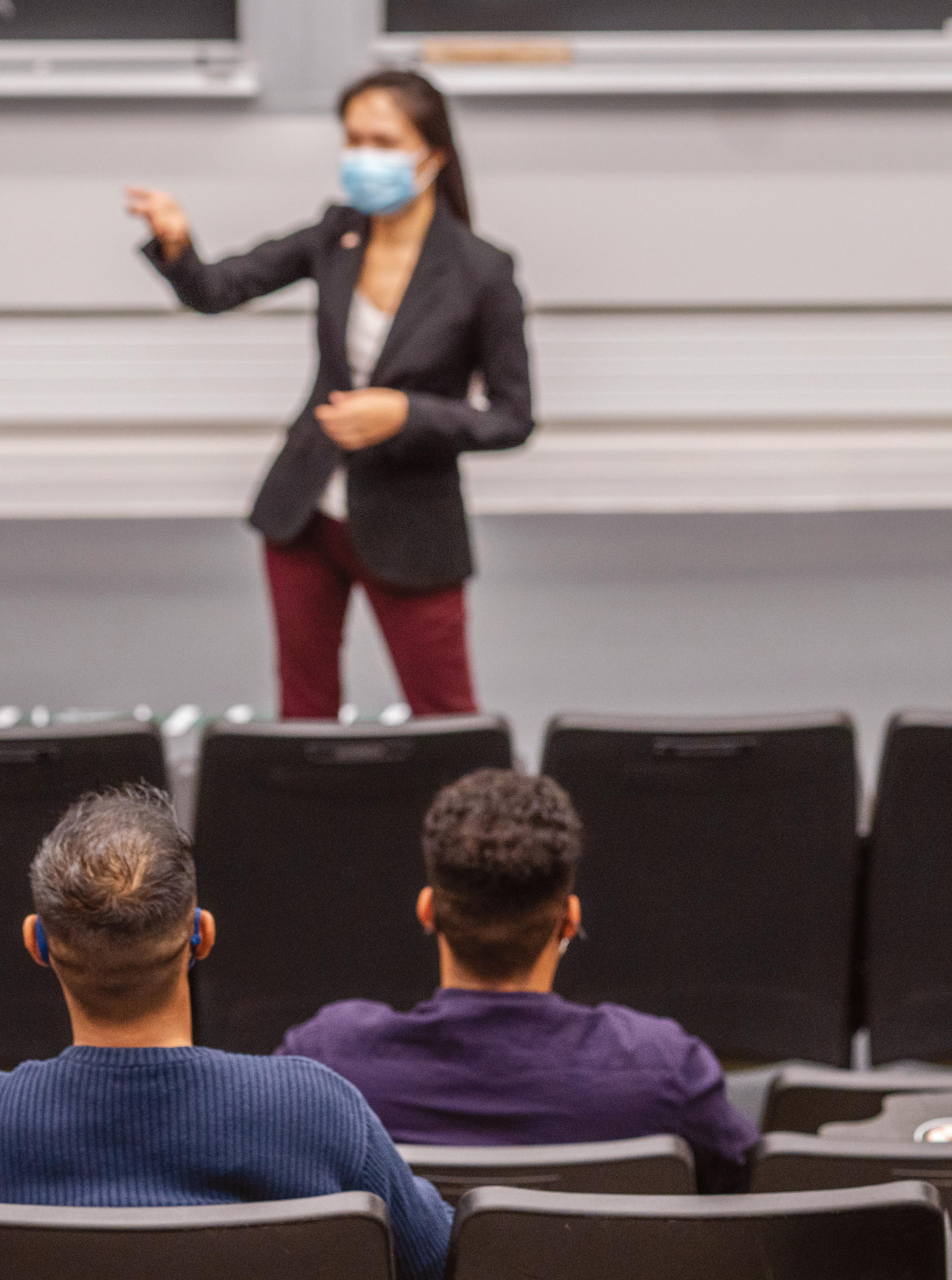
Reinventing the Classroom
The convenience and accessibility of online learning has opened a world of new possibilities. Students who aren’t feeling well can attend classes online, and those who might be limited by transportation issues can connect with higher education from their laptop. Remote learning provides peace of mind for the immunocompromised by allowing them to take the necessary steps to protect their health.
Markland says Sinclair Community College doubled its number of online courses during the pandemic. As of fall 2021, the college had developed 74 fully online programs, and it had also added more than 500 sections of in-person classes to support workforce development and training for essential jobs.
“We’ve been regularly surveying our students and asking them what they want and what modality they prefer,” Markland explains, noting that the college was already committed to developing more online coursework, but the pandemic accelerated efforts. “It also challenged us to be even more collaborative among departments, units, faculty and staff and to closely pay attention to how students learn — not only traditional students but our adult students — and what they need in terms of support.”
Aside from ramping up online learning and keeping it in place as in-person classes returned, Sinclair Community College also focused on evolving the curriculum by asking, “How can college prepare students for essential, recession-proof jobs?”
Although around 8,000 high schoolers take classes offered by Sinclair through the College Credit Plus program, the college caters to a lot of nontraditional students, who are older than 21 and face the realities of adult life while also trying to complete their education.
“They have adult challenges, like taking care of kids or loved ones or parents, and they are trying to work their own jobs,” he says. “So, there are a wide set of issues they are facing along with being a college student.”
Making New Connections
Some universities embraced hybrid formats as students returned to campus to allow for in-person engagement while staying safe with ample student spacing. For example, if students are enrolled in a lecture, they are split into two groups and alternate between attending in person and attending remotely. Hybrid can also mean that students attend classes online and meet in small study groups throughout the week, says Joe B. Whitehead Jr., provost and senior vice president for academic and student affairs at Bowling Green State University.
“There are opportunities where we can enhance the student experience through virtual engagement,” Whitehead adds, relating a lesson learned during the pandemic. “Professors can use Zoom rooms for office hours with five or six students at one time, then they can listen to each other’s questions and hear answers. So, faculty can cover more material and engage more students at one time.”
Virtual office hours can make asking questions easier for students who hesitate to raise a hand or are reluctant to show up in person at a faculty member’s office.
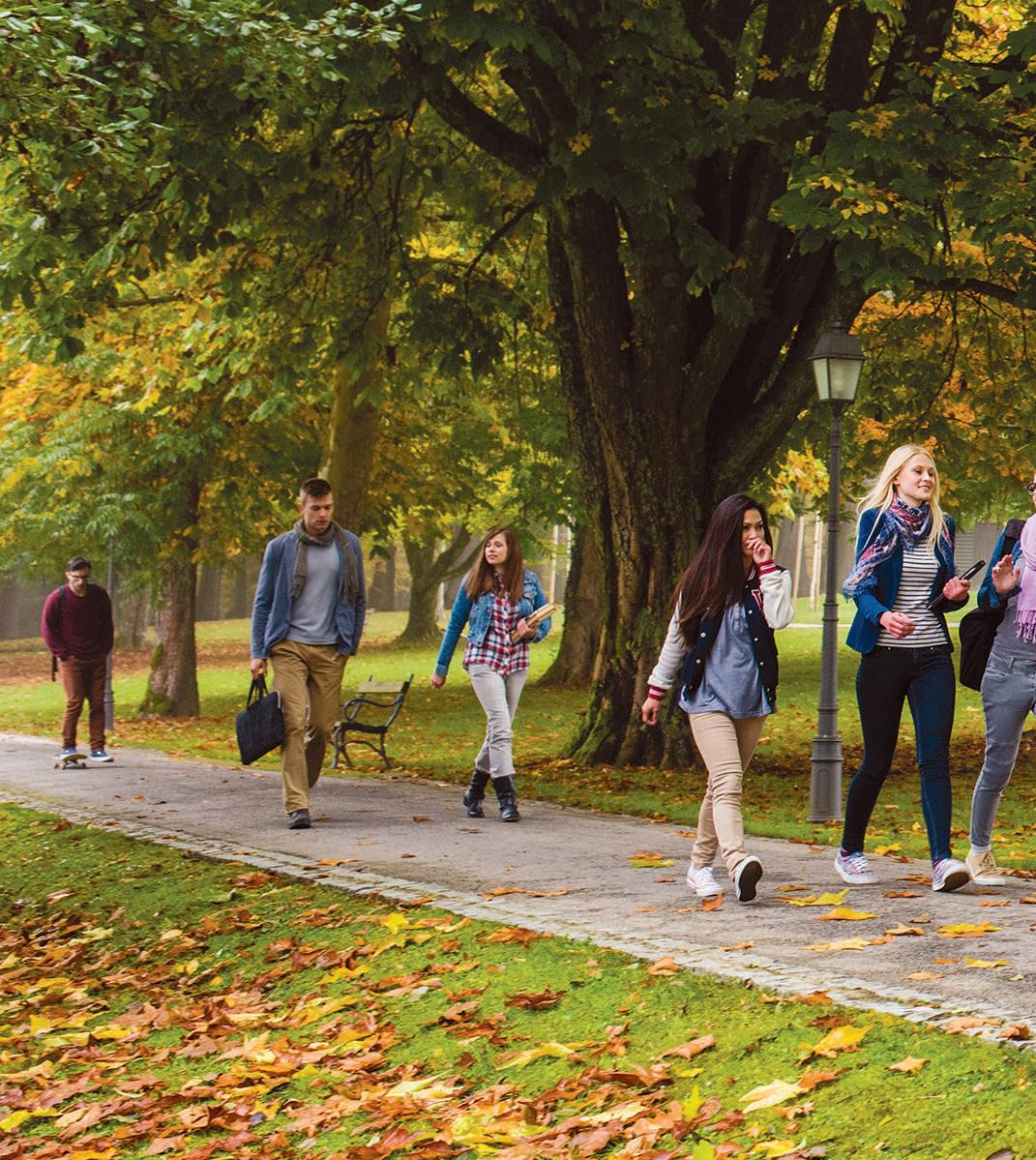
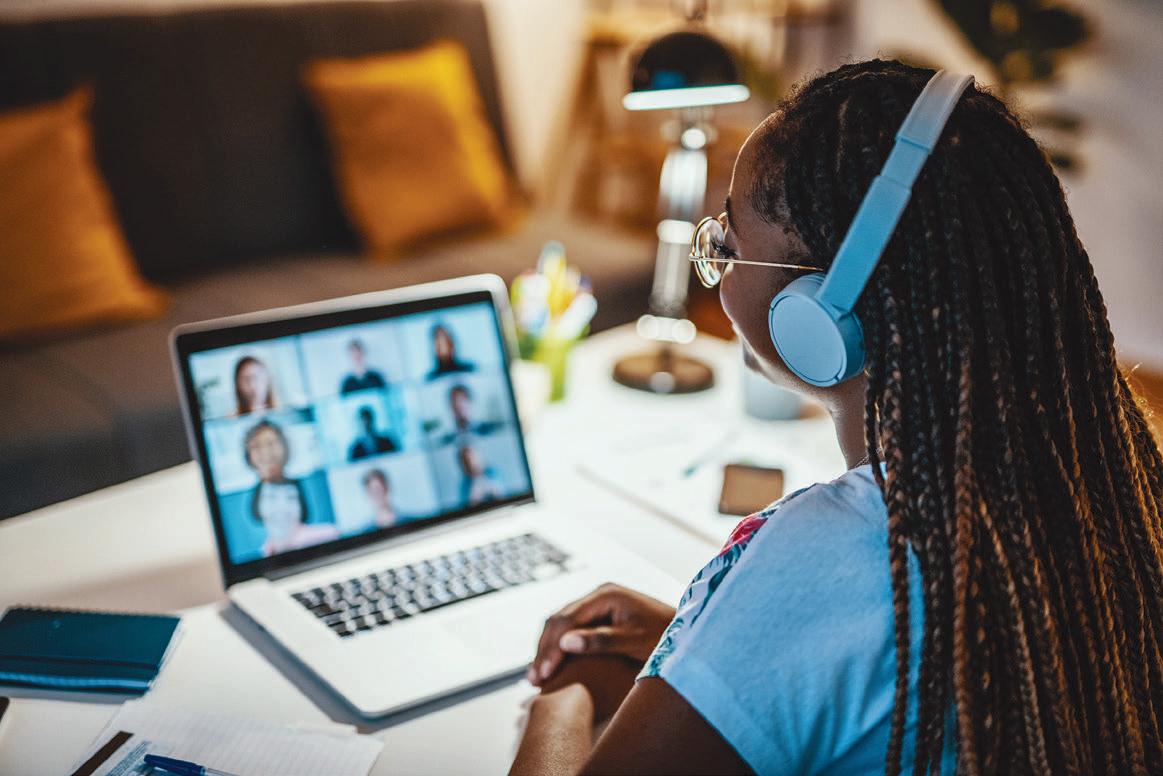
Ali Martin Scoufield, interim dean of students, Cleveland State University
ute question virtually, it’s much easier than walking across campus from your dorm,” Whitehead says.
Although in-person learning is back and students are embracing the return of what they imagined their campus experience to be, technology has altered how universities connect with their students and the way those students prefer to learn. Martin Scoufield says she sees technology as a tool that resilient students use to stay engaged with the coursework.
“We’ve had students who were sick or hospitalized reaching out for support and saying, ‘I still want to engage. I have an exam tomorrow and I could probably take it the next day.’” she says. “I’ve been really impressed with our students’ dedication and drive and devotion in saying, ‘This is a barrier, and let’s work together to figure it out.’”
Supporting Students
Collaboration is how campuses adjusted to the pandemic, adopting new processes and helping students navigate a very different college experience. Martin Scoufield says Cleveland State University looked at providing student assistance from a variety of angles.
“We also became even more inclusive of the voices at the table because we were coming at issues from many different perspectives, from financial aid to residence halls,” she says.
Providing student support became a top priority, and this focus has continued as students return to campus. That includes ramping up counseling services and making federal CARES Act funding available to pay for needs such as food, transportation, housing, daycare or technology.
“Most went directly back to the students in the form of grants,” Martin Scoufield says of Cleveland State University’s CARES funding support efforts.
At Sinclair Community College, CARES Act dollars went toward emergency grants and additional resources that included social work support and expanded mental health services available during evenings and weekends, along with enlisting a third-party counseling partner.
“We added additional capacity in our food bank and helped students with health screenings, along with bringing in a mobile grocery store to campus, which offers low-cost access to nutritious food, so students don’t have to go far,” Markland says. “We layer support for students of all different backgrounds. We had to be responsive across the spectrum.”
Bowling Green State University had shifted to single-occupancy residence hall rooms during the height of the pandemic, but it now is back to assigning roommates, a move the university found vital to making healthy social connections.
“The remoteness was not good for our students,” Whitehead says. “It was hard for them to have relationships, so we needed to make sure with the lower [COVID-19] case numbers, we went back to normal occupancy, so there was more engagement.”
Looking ahead to winter and spring 2022 and beyond, the future of higher education’s return to a more traditional experience looks even brighter, Markland says, adding that the pandemic brought to light the reality of human fragilities and the need to serve students as people, not just learners. He adds that as the impact of COVID-19 continues to evolve, college campuses will continue to adapt as well.
“We are here to support students’ livelihoods and educational access,” he says. “We are learning and doing together.”
